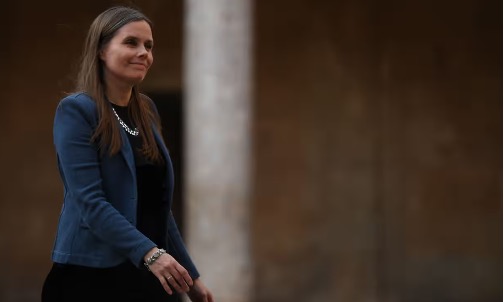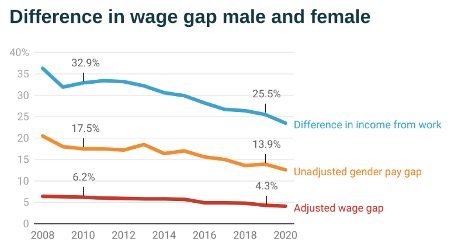Why did the world's most equal country strike for a pay gap?
In a resounding call for change, tens of thousands of women and non-binary individuals in Iceland joined Prime Minister Katrín Jakobsdottír to orchestrate a remarkable 24-hour strike on October 24th, 2023. Their collective protest, unfolding in the world’s most equal country, brings to light the enduring challenges in achieving complete gender parity, even in a nation that has consistently topped global charts for gender equality.

A background on Iceland’s gender equality
Iceland’s commitment to gender equality is deeply ingrained. Leading the World Economic Forum’s Global Gender Wage Gap Report for 14 consecutive years, the nation boasts a 91.2% closure of its gender gap, achieving complete parity in the healthcare and education. Despite such commendable strides, the recent strike, with its poignant slogan “Do You Call This Equality?”, reflects a collective dissatisfaction, emphasizing that anything short of complete gender parity is unacceptable.
Historically, Iceland has been at the forefront of women’s empowerment. It was the first country to elect a female president directly and granted women the right to vote early on. A groundbreaking 2018 law mandates companies with over 25 employees to prove equal wages through a mandatory equal pay certification, thereby prohibiting gender-based discrimination in the workplace.
According to the Harvard Business Review, this legislation led to dramatic results because it shifted the burden of proof to the employer instead of the employee and because the government ensured an effective enforcement system by making certification mandatory thereby limiting the deterrent effect of the legislation. The law also made transparency mandatory by requiring companies to ensure a traceable pay system, thus increasing accountability and clarity in their performance award system.
Iceland’s “use it or lose it” parental leave scheme, along with subsidized childcare, has mitigated the “motherhood penalty,” facilitating women’s return to work post-birth. Legislative frameworks, such as Article 15 of the Act on Equal Status and Equal Rights of Women and Men mandate that every public company board and government council or committee should have at least 40% gender equality.
The landmark year 1975 saw Iceland’s first Women’s Day Off, catalyzing the Equality Act of 1976 and, five years later, the election of the nation’s first female Prime Minister. These events laid the foundation for continuous progress toward gender equality.

A closer look at the strike
The recent strike was organized on the 48th anniversary of the first “Kvennafri” (“Women’s Day Off”) where around 90% of women in Iceland went on strike and abstained from all kinds of work both professional and domestic. This was done to highlight the significant contributions made by women in society.
The organizers of the recent strike aimed to achieve the same effect by abstaining from all paid and unpaid labour. While men were asked not to attend, they were encouraged to show solidarity by taking on additional responsibilities at home.
The ultimate intention behind the strike was to bring to light the persisting gender disparities and gender-based violence in the country.

Why are Icelandic women dissatisfied with their progress?
Despite substantial advancements, certain sectors, particularly Finance and Insurance, have seen a widening gender gap, exacerbated by economic complexities, especially after the 2020 pandemic. Lower-paying jobs still attract more women, influenced by societal expectations and biases, perpetuating disparities. Immigrant women, constituting 22% of Iceland’s labour market, face wage disparities that fail to reflect their invaluable contributions.
Women in Iceland acknowledge that leading gender parity indices is not enough. The global gender pay gap persists, with only a 2.8% decrease in the past decade. According to the World Economic Forum, it will take us 131 years to achieve complete gender equality at this rate. This means that women across the world will have to wait till the year 2154 to enjoy equality. Iceland’s example serves as a call to action for revolutionary changes worldwide.
Encouraging women into leadership positions is crucial because according to the Bloomberg Gender Equality Index 2023, the mean gender pay gap was 50% lower for companies with women CEOs. While gender equality is the right thing to do, it also brings economic benefits, especially for the private sector. Women in leadership roles bring more profits to companies according to recent studies. A McKinsey study shows that companies with women in executive teams were 25% more likely to have above-average profitability as compared to firms with male-dominated executive teams.
Thus, while Iceland stands at the forefront of the global conversation on gender equality, it also leads the world in achieving more progress through activism, corporate responsibility, women in public and private leadership roles, and legislature. The strike of 24thOctober encourages women to never stop fighting until they are completely satisfied with the outcome.
Written by – Aislin Mary Joy
Edited by – Mehansh Barthwal
